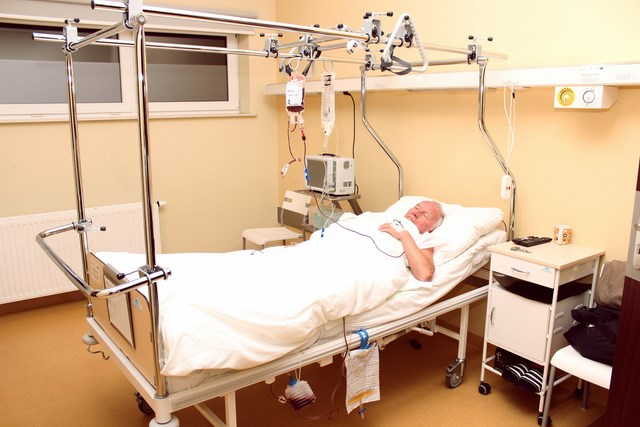
Since the shoulder joint has a high degree of mobility, its susceptibility to injury is also high. Different types of injuries concerning the shoulder joint that require operative treatment can be distinguished.
Shoulder joint instability
A major element of the shoulder that enables a high degree of motion is the scapulohumeral joint. This joint might cause either congenital or post-traumatic instability. The post-traumatic instability usually affects young people after a twisting injury. Classical immobilization after reducing dislocation does not guarantee a proper healing process of the structures. This may lead to the development of the habitual shoulder joint instability causing continuous dislocations in trivial situations. These dislocations can even contribute to degenerative joint disease. Early anatomical restoration of damaged structures protects the shoulder joint from instability as well as secondary degeneration.
Rotator cuff injury
It is damage to one or more of the muscles or tendons that make up the rotator cuff. It might be caused by an injury, twisting, as well as slow degeneration of the tendon. The torn tendon may give rise to pain and limited mobility of the joint.
Rotator cuff impingement syndrome
It occurs when there is too little amount of space between the acromion and the head of the humerus. This leads to severe shoulder pain radiating to the arm and elbow, crepitation under the acromion. As a result, a limited range of motion may occur.
TREATMENT
ARTHROSCOPY
It is a modern and minimally invasive surgical procedure that allows the doctor to both examine and treat the joint. It is performed by using an arthroscope (endoscope) that is inserted into the joint cavity through a small incision of 0,5 cm, and a picture of the interior of the joint can be seen on a video screen. This method allows the doctor to perform repair surgery by inserting surgical instruments into the joint cavity through different small incisions in the skin.
All patients who feel continuous pain in the shoulder joint that lasts more than 3 weeks can be qualified for diagnostic shoulder arthroscopy. The pain might be either idiopathic or caused by an injury to the shoulder joint which radiates to the elbow and limits free motion of the shoulder. In our hospital, we perform arthroscopic labral and rotator cuff repair. In inveterate, habitual dislocations of the shoulder, we perform surgery using a bone graft. ConMed Linvatec system and instruments are used for this kind of surgery. We have access to SUPER REVO, Bio Mini – Revo implants.
Length of stay:
The average length of stay is approximately 2 to 3 days after which the patient is discharged from hospital.
After surgery:
After the surgery, the patient stays under constant medical supervision in the orthopedic outpatient clinic then sent to a reputable rehabilitation center.
Waiting time:
The average waiting time for the surgery is approximately 2 to 3 weeks.
SHOULDER REPLACEMENT
A surgical procedure that replaces a joint with artificial parts (called prostheses). This method restores joint function and enables the patient to walk and lift heavy objects. It is the only method that allows the patient to walk without pain.
In the case of the femoral head injury, we perform a partial shoulder replacement without replacing of the acetabulum. Total shoulder joint replacement is performed in the case of degenerative joint disease. In this case, the acetabulum is replaced with an implant.
Length of stay:
The average length of stay is approximately 6 to 10 days after which the patient is provided with initial rehabilitation.
After surgery:
After the surgery, the patient stays under constant medical supervision in the orthopedic outpatient clinic then sent to a reputable rehabilitation center.
Waiting time:
The average waiting time for the surgery is approximately 2 to 4 weeks.
